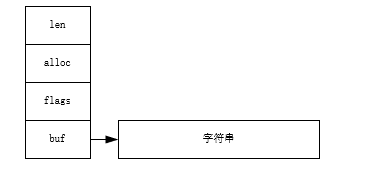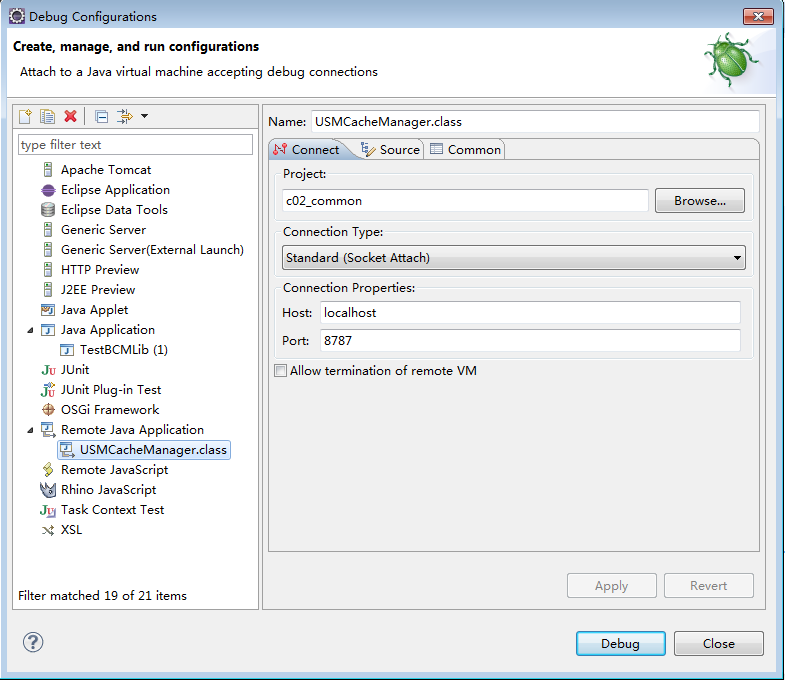Redis源码剖析之SDS
#
以下涉及到的源码均为redis5.0-rc3版本的代码【点击查看官方源码】
文章目录
- SDS简介
- SDS数据结构
- SDS特点
- SDS操作函数
SDS简介
简单动态字符串(simple dynamic string),是redis底层为字符串而设计的一种数据结构,是针对C字符串的一个改良版。凡是涉及到需要修改的字符串均采用sds来存储,而非C字符串。
SDS数据结构
如下是sds数据结构的定义(sds.h头文件中):
/* Note: sdshdr5 is never used, we just access the flags byte directly.* However is here to document the layout of type 5 SDS strings. */struct __attribute__ ((__packed__)) sdshdr5 {unsigned char flags; /* 3 lsb of type, and 5 msb of string length */char buf[];};struct __attribute__ ((__packed__)) sdshdr8 {uint8_t len; /* used */uint8_t alloc; /* excluding the header and null terminator */unsigned char flags; /* 3 lsb of type, 5 unused bits */char buf[];};struct __attribute__ ((__packed__)) sdshdr16 {uint16_t len; /* used */uint16_t alloc; /* excluding the header and null terminator */unsigned char flags; /* 3 lsb of type, 5 unused bits */char buf[];};struct __attribute__ ((__packed__)) sdshdr32 {uint32_t len; /* used */uint32_t alloc; /* excluding the header and null terminator */unsigned char flags; /* 3 lsb of type, 5 unused bits */char buf[];};struct __attribute__ ((__packed__)) sdshdr64 {uint64_t len; /* used */uint64_t alloc; /* excluding the header and null terminator */unsigned char flags; /* 3 lsb of type, 5 unused bits */char buf[];};
从以上源码中可看见,redis针对C中类型长度的不同定义了5中结构:sdshdr5、sdshdr8、sdshdr16、sdshdr32、sdshdr64,其中sdshdr5已经不再使用了(由源码中注释得知-“sdshdr5 is never used, we just access the flags byte directly”)。下面给出结构示意图:
其中:
- len:已使用的空间;
- alloc:除了空符号和结构头部之外所有的已分配空间,即真正为字符串分配的空间;
- flags:结构类型
- buf[]:存字符串的空间;
以sdshdr16结构的字符串“string”为例,如下所示:
总共占用17(4+4+1+6+1+1)个字节,这里的flags为何为2将在后续进行说明。
SDS特点
- 能以O(1)的复杂度获取字符串的长度(len)以及剩余的未使用空间情况(alloc-len:此将对空间的分配和释放有重大影响)。
- 保留了C字符串的空字符‘\0’,这样就可以是的sds能无影响的使用部分的C字符串操作函数。
- 在空间分配方面,采用结构类(java的集合)常用的预分配策略。而sds的分配策略是当前空间小于1M时则变成当前空间的两倍,否则直接再分配1M。
- 在空间回收方面,sds不会立即释放,而是先保留,防止后续在空间不足的情况下再次分配带来的代价。
- 相比C字符串而言,sds是二进制安全的,因为sds识别整个字符串是通过len来判断,并不是同C而言是通过空字符结尾来判断。
SDS操作函数
这里只列出部分函数。
在列出操作函数之前,首先给出如下的宏定义:
//定义结构类型#define SDS_TYPE_5 0#define SDS_TYPE_8 1#define SDS_TYPE_16 2#define SDS_TYPE_32 3#define SDS_TYPE_64 4//定义结构类型的掩码#define SDS_TYPE_MASK 7#define SDS_TYPE_BITS 3//获取header指针#define SDS_HDR_VAR(T,s) struct sdshdr##T *sh = (void*)((s)-(sizeof(struct sdshdr##T)));#define SDS_HDR(T,s) ((struct sdshdr##T *)((s)-(sizeof(struct sdshdr##T))))//sdshdr5类型的len#define SDS_TYPE_5_LEN(f) ((f)>>SDS_TYPE_BITS)
接下来是6个静态内联函数。在看它们之前,需要先说明一下sds结构中的flags,前面说了它是代表结构的类型,那么它又是怎样来表明的呢?首先已知sds字符串s,那么根据内存分布情况就可以得到flags的值为s[-1], 在将其与宏定义的类型掩码进行与运算便得出类型值,如此便可以知道一个sds究竟使用的是哪儿种类型进行存储的了。
获取len的方法:
static inline size_t sdslen(const sds s) {unsigned char flags = s[-1];switch(flags&SDS_TYPE_MASK) {case SDS_TYPE_5:return SDS_TYPE_5_LEN(flags);case SDS_TYPE_8:return SDS_HDR(8,s)->len;case SDS_TYPE_16:return SDS_HDR(16,s)->len;case SDS_TYPE_32:return SDS_HDR(32,s)->len;case SDS_TYPE_64:return SDS_HDR(64,s)->len;}return 0;}
获取free空间(即未被使用的空间)的方法:
static inline size_t sdsavail(const sds s) {unsigned char flags = s[-1];switch(flags&SDS_TYPE_MASK) {case SDS_TYPE_5: {return 0;}case SDS_TYPE_8: {SDS_HDR_VAR(8,s);return sh->alloc - sh->len;}case SDS_TYPE_16: {SDS_HDR_VAR(16,s);return sh->alloc - sh->len;}case SDS_TYPE_32: {SDS_HDR_VAR(32,s);return sh->alloc - sh->len;}case SDS_TYPE_64: {SDS_HDR_VAR(64,s);return sh->alloc - sh->len;}}return 0;}
对len的值进行重计算:
//直接进行赋值设置static inline void sdssetlen(sds s, size_t newlen) {unsigned char flags = s[-1];switch(flags&SDS_TYPE_MASK) {case SDS_TYPE_5:{unsigned char *fp = ((unsigned char*)s)-1;*fp = SDS_TYPE_5 | (newlen << SDS_TYPE_BITS);}break;case SDS_TYPE_8:SDS_HDR(8,s)->len = newlen;break;case SDS_TYPE_16:SDS_HDR(16,s)->len = newlen;break;case SDS_TYPE_32:SDS_HDR(32,s)->len = newlen;break;case SDS_TYPE_64:SDS_HDR(64,s)->len = newlen;break;}}//相加改变len值static inline void sdsinclen(sds s, size_t inc) {unsigned char flags = s[-1];switch(flags&SDS_TYPE_MASK) {case SDS_TYPE_5:{unsigned char *fp = ((unsigned char*)s)-1;unsigned char newlen = SDS_TYPE_5_LEN(flags)+inc;*fp = SDS_TYPE_5 | (newlen << SDS_TYPE_BITS);}break;case SDS_TYPE_8:SDS_HDR(8,s)->len += inc;break;case SDS_TYPE_16:SDS_HDR(16,s)->len += inc;break;case SDS_TYPE_32:SDS_HDR(32,s)->len += inc;break;case SDS_TYPE_64:SDS_HDR(64,s)->len += inc;break;}}
获取sds字符串总共分配的空间:
/* sdsalloc() = sdsavail() + sdslen() */static inline size_t sdsalloc(const sds s) {unsigned char flags = s[-1];switch(flags&SDS_TYPE_MASK) {case SDS_TYPE_5:return SDS_TYPE_5_LEN(flags);case SDS_TYPE_8:return SDS_HDR(8,s)->alloc;case SDS_TYPE_16:return SDS_HDR(16,s)->alloc;case SDS_TYPE_32:return SDS_HDR(32,s)->alloc;case SDS_TYPE_64:return SDS_HDR(64,s)->alloc;}return 0;}
重新设置alloc值:
static inline void sdssetalloc(sds s, size_t newlen) {unsigned char flags = s[-1];switch(flags&SDS_TYPE_MASK) {case SDS_TYPE_5:/* Nothing to do, this type has no total allocation info. */break;case SDS_TYPE_8:SDS_HDR(8,s)->alloc = newlen;break;case SDS_TYPE_16:SDS_HDR(16,s)->alloc = newlen;break;case SDS_TYPE_32:SDS_HDR(32,s)->alloc = newlen;break;case SDS_TYPE_64:SDS_HDR(64,s)->alloc = newlen;break;}}
sds空间分配和释放相关的两个函数如下所示:
//sds最大空间预分配值(在头文件中顶定义)#define SDS_MAX_PREALLOC (1024*1024)/* Enlarge the free space at the end of the sds string so that the caller* is sure that after calling this function can overwrite up to addlen* bytes after the end of the string, plus one more byte for nul term.** Note: this does not change the *length* of the sds string as returned* by sdslen(), but only the free buffer space we have. */sds sdsMakeRoomFor(sds s, size_t addlen) {void *sh, *newsh;size_t avail = sdsavail(s);size_t len, newlen;char type, oldtype = s[-1] & SDS_TYPE_MASK;int hdrlen;/* Return ASAP if there is enough space left. */if (avail >= addlen) return s;//如果可用空间不足的情况下,进行空间增加len = sdslen(s);sh = (char*)s-sdsHdrSize(oldtype);newlen = (len+addlen);if (newlen < SDS_MAX_PREALLOC)//小于1M直接变为原来的2倍newlen *= 2;else//大于1M的情况,累加1Mnewlen += SDS_MAX_PREALLOC;type = sdsReqType(newlen);/* Don't use type 5: the user is appending to the string and type 5 is* not able to remember empty space, so sdsMakeRoomFor() must be called* at every appending operation. */if (type == SDS_TYPE_5) type = SDS_TYPE_8;hdrlen = sdsHdrSize(type);if (oldtype==type) {newsh = s_realloc(sh, hdrlen+newlen+1);if (newsh == NULL) return NULL;s = (char*)newsh+hdrlen;} else {/* Since the header size changes, need to move the string forward,* and can't use realloc */newsh = s_malloc(hdrlen+newlen+1);if (newsh == NULL) return NULL;memcpy((char*)newsh+hdrlen, s, len+1);s_free(sh);s = (char*)newsh+hdrlen;s[-1] = type;sdssetlen(s, len);}sdssetalloc(s, newlen);return s;}/* Reallocate the sds string so that it has no free space at the end. The* contained string remains not altered, but next concatenation operations* will require a reallocation.** After the call, the passed sds string is no longer valid and all the* references must be substituted with the new pointer returned by the call. */sds sdsRemoveFreeSpace(sds s) {void *sh, *newsh;char type, oldtype = s[-1] & SDS_TYPE_MASK;int hdrlen, oldhdrlen = sdsHdrSize(oldtype);size_t len = sdslen(s);sh = (char*)s-oldhdrlen;/* Check what would be the minimum SDS header that is just good enough to* fit this string. */type = sdsReqType(len);hdrlen = sdsHdrSize(type);/* If the type is the same, or at least a large enough type is still* required, we just realloc(), letting the allocator to do the copy* only if really needed. Otherwise if the change is huge, we manually* reallocate the string to use the different header type. */if (oldtype==type || type > SDS_TYPE_8) {newsh = s_realloc(sh, oldhdrlen+len+1);if (newsh == NULL) return NULL;s = (char*)newsh+oldhdrlen;} else {newsh = s_malloc(hdrlen+len+1);if (newsh == NULL) return NULL;memcpy((char*)newsh+hdrlen, s, len+1);s_free(sh);s = (char*)newsh+hdrlen;s[-1] = type;sdssetlen(s, len);}sdssetalloc(s, len);return s;}


































还没有评论,来说两句吧...